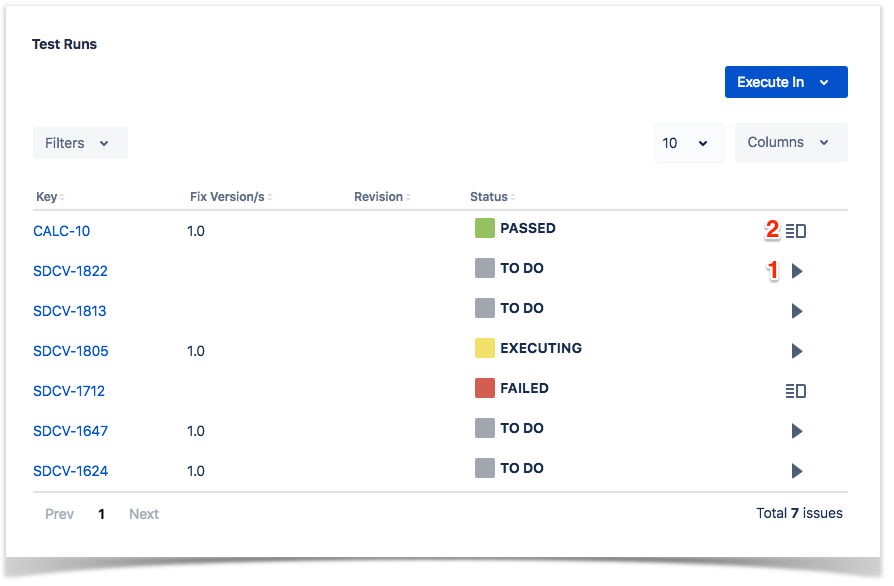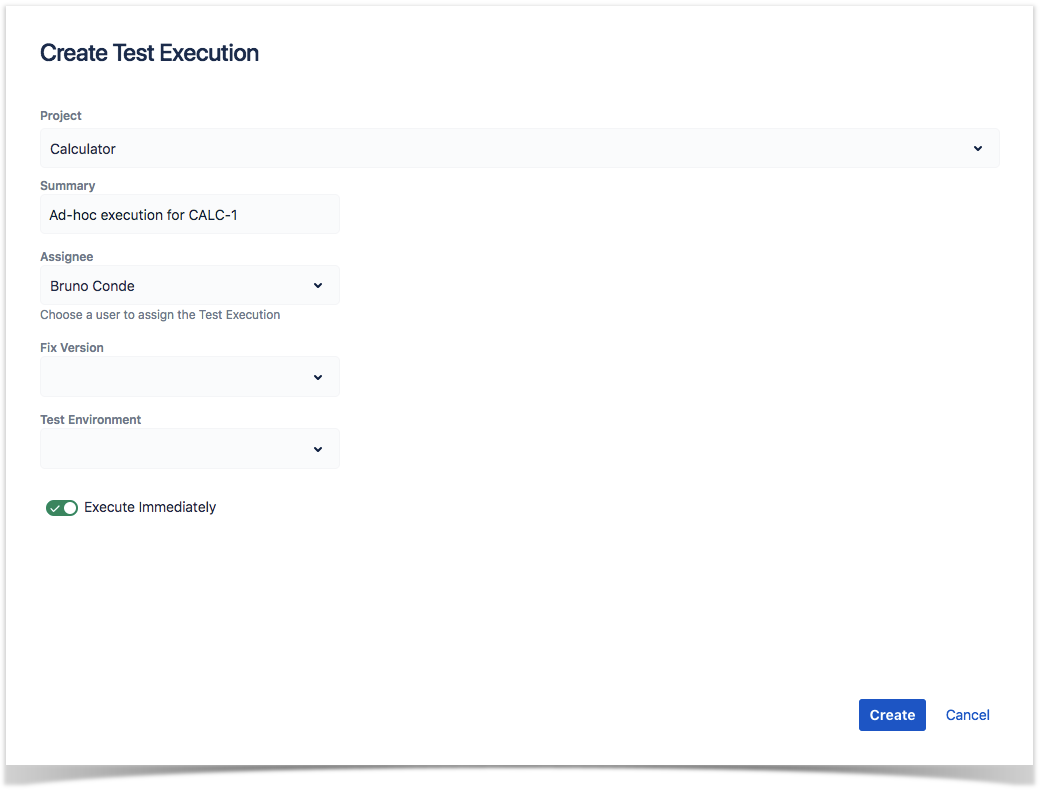Page History
A Test Run (sometimes simply referred to as a "run") occurs when a Test is scheduled to execute within a Test Execution. Therefore, each time you run a Test, you're, in fact, running performing a Test Run.
A Test Run is an internal instance of a Test scenario that is used to validate some a specific version of source code/SUT, in a specific environment. Various test runs allow you to easily detect code defects that could lead to system failures.
...
A Test Run contains a copy of the testing specification of the Test and associated Pre-ConditionsPreconditions. This specification only comprises some fields of these entities; thus, not all fields are copied to the Test Run.
General custom fields, summary, description fields are not replicated in the Test Run. ThusTherefore, you should avoid using those these fields to add "relevant" information to the test specification.
Depending on the original type of the Test associated with this Test Run, these are the fields are replicated in the Test Run.:
| Manual Tests | Cucumber Tests | Generic Tests | |
|---|---|---|---|
| Test |
|
|
|
| linked Pre-ConditionPrecondition(s) |
|
|
|
Since a Test Run is related to the execution of a Test, obviously, it contains comments and information about linked defects and evidences (i.e., attachments).
...
Test Runs represent the results of running some Test specification at some moment in time, in the context of some Test Execution. Thus, they assure data consistency.
So, what What happens if you change the Test specification at any time? Your existing Test Runs will not change (unless you want them to), in order to ensure . This ensures data consistency and compliance with conformance regulations.
...
- the Project in which the Test Execution the current Test is associated with
- the target release Version tested by the Test Execution the current Test is associated with
- the Status of the Test Execution the current Test is associated with
- the Start and End dates of the Test Execution the current Test is associated with
- the Test Environment of the Test Executions the current Test is associated with
- the Clear button , that empties all the Test Runs Filter fields
...
- the Execution Key of the listed Test Execution the current Test is associated with
- the Fix Version tested by the listed Test Execution the current Test is associated with
- the System Revision tested by the listed Test Execution the current Test is associated with
- the Exec by who is the Assignee of the listed Test Execution the current Test is associated with
- the Start and End dates of the listed Test Execution the current Test is associated with
- the Defects related with the listed Test Execution the current Test is associated with
- the Status of the listed Test Execution the current Test is associated with
Actions
The "Execute Test" and "Execute Test Inline" actions are available in the Test issue screen. They may also be available in similar Test Runs sections that may be present in other places.
...
Step 1: Open the Test you wish want to run.
Step 2: Click Run (1, 2) action to to open the Execution page.
The icon in 2 is only displayed when the test run is in a final status.
...
When executing inline Tests, the status of the manual steps (or Examples in the case of Cucumber Tests) , can be changed automatically. The following rules are applied:
...
Step 1: Open the Test issue you wish want to run.
Step 2: Click on the Status located in the status column of the Test Runs table and select one of the available statuses.
...
Step 1: Open the Test issue you wish want to view the test execution details.
Step 2: Click the Execute button, that which appears in the last column of the desired Test Run that is in a final state, to open the Execution page and view the details.
...
Step 1: Open the Test issue you wish want to execute.
Step 2: Click the Execute In button in Test Runs section and select New Test Execution....
...
Note: If there are custom required fields, an error message will be displayed asking the user to click you to open the normal create issue screen with the pre-populated fields. If the revision field is not configured in the create issue screen of the Test Execution for the selected Project, the field will not appear in the dialog.
If the Redirect the Redirect To Execute Test Page option is selected, you will be redirected to the Execute Test page after the test execution is created.
...
Configure Test Run Columns
Xray provides the ability you to configure columns for the Test Runs table. This configuration is specific to each user and can be restored to the default configuration defined in the Default Column Layouts page in Xray's Project Settings.
Some columns may be be be fixed and thus so you won't be able to remove them from the table.
...
Step 3: Add or remove columns by clicking the checkboxes next to each field.
Step 4: Click the Done button when finished or Cancel to abort this operation. The table refreshes with the configured columns.
...
Step 1: Open the Test Execution issue.
Step 2: Click on the Columns , and select the dropdown that appears above the table in the top-right corner. A list of the current configure columns and all available columns appears.
...


